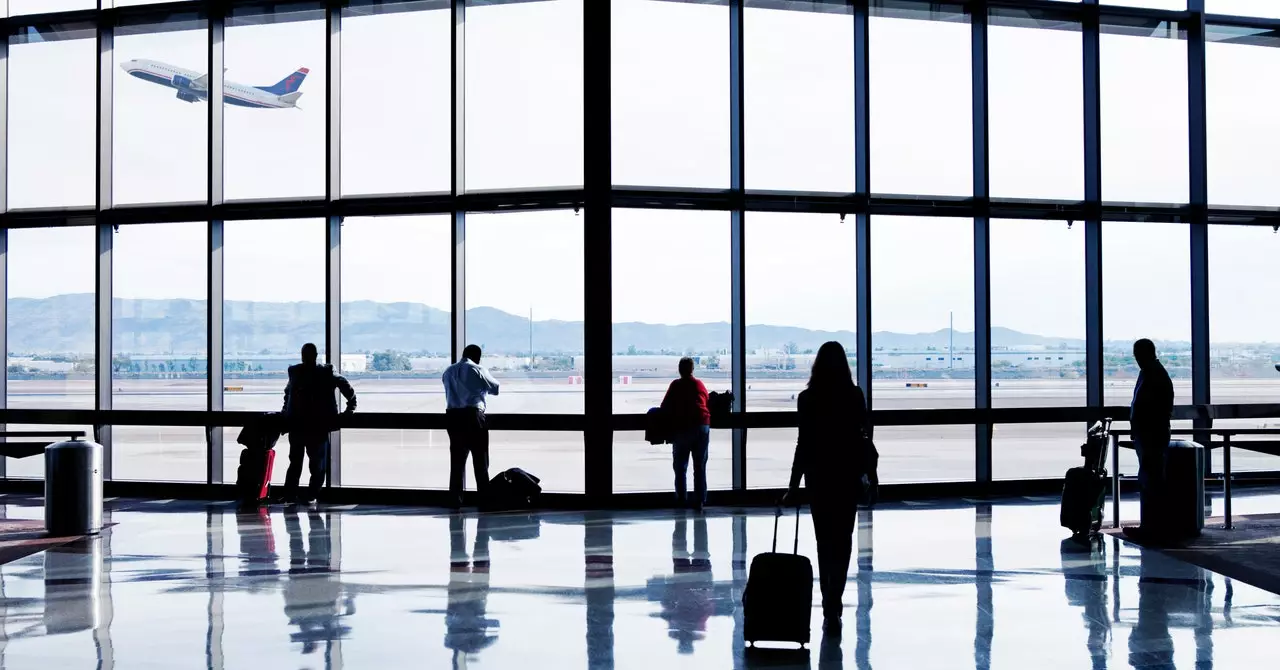Airports are often seen as mere transit hubs, essential for travel yet devoid of deeper significance. However, lurking beneath their seemingly mundane facade lies a wealth of psychological complexities that influence our behaviors. Observations of unusual conduct at these locations, whether it be whimsical yoga sessions or outrageous drunken brawls, suggest that airports can elicit extreme responses from individuals. As incidents of air rage rise and flights face diversions owing to unruly passengers, a deeper examination of the psychological ramifications of airport environments is warranted.
Adventures typically commence long before departure. The atmosphere of an airport sparks excitement in many travelers, who view their travel as a prelude to relaxation and exploration. This heightened anticipation shifts our mindset toward a more adventurous attitude, nudging us toward behavior we might otherwise restrain. Yet, in stark contrast, those who harbor anxiety toward flying can resort to self-medication through alcohol, seeking solace in temporary relief. This dichotomy underscores how different reactions to the same environment can lead to drastically varied behaviors.
Compounding these emotions are the systemic stimuli present in airports: throngs of people, ambient noise, and the frenetic energy of travelers rushing to their gates. Environmental psychology suggests that such sensory overload can tilt individuals toward irritability and frustration. The stressors associated with navigating busy terminals often exacerbate underlying emotions, leading to behaviors that can be labeled antisocial or eccentric.
Airports represent a unique context known in psychogeographic studies as “liminal spaces.” Within these thresholds, the boundaries of normality blur, rendering them as places that exist outside of standard social norms. In this unique geography, we temporarily transcend national identities and time conventions, finding ourselves in a surreal intersection between destinations. This phenomenon mirrors the notion of “thin places” found in various cultures, where earthly and ethereal realms interweave.
When passengers pass through security, they step into a realm devoid of clear definitions, where national boundaries dissipate. Temporal shifts further complicate perceptions; flights that journey across time zones transform our concept of punctuality, dismantling the temporal structure that usually governs our lives. This ambiguity can breed discomfort, stemming from a loss of control—another layer of the psychological complexity at play in airports.
Delays and disruptions highlight another critical facet of airport psychology: the tendency to fixate on future events. Whether it’s the imminent adventure awaiting at the destination or the urge to get home, passengers often neglect the importance of the present moment. This relentless focus on future experiences often incites anxiety, particularly when external factors intrude upon anticipated timelines. Flights may be delayed, gates might change, and uncertain waiting times can drive individuals to frustration and irritability.
Consequently, the customary politeness and patience that travelers might embody in ordinary situations can morph into perturbation and impulse-driven behavior. What may seem like trivial inconveniences can unearth feelings of helplessness, compelling passengers to express dissatisfaction outwardly.
As the instances of unruly behavior continue to rise, strategies to mitigate these incidents become imperative. Calls for increased regulation surrounding alcohol sales in airports and on flights are gaining traction. Implementing measures such as limiting drink purchases or enhancing communication about waiting times could maintain a semblance of order within this unpredictable environment.
Moreover, creating spaces within airports that facilitate respite—quiet zones, interactive art installations, and comfortable lounges—could alleviate some of the overwhelming stress that accompanies travel. By recognizing the psychological facets of airport experience, we can craft environments that not only foster excitement but also encourage calm, consideration, and mutual respect among travelers.
Airports are much more than mere transition points; they are dynamic arenas where complex psychological interactions occur. By understanding these underlying factors, we can better navigate the challenges they present, leading to a more harmonious travel experience for all. As we bridge the gap between the everyday and the extraordinary, the behavior we exhibit may ultimately reflect the unique liminal space we occupy.

